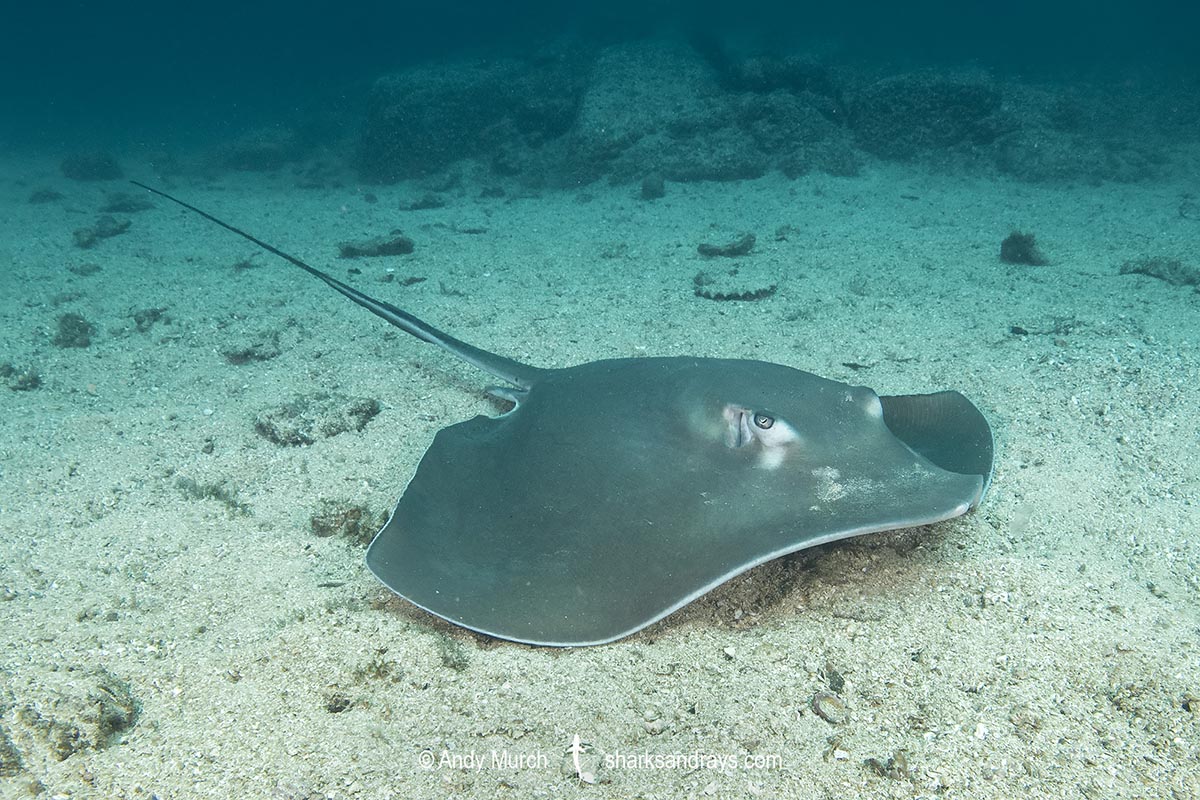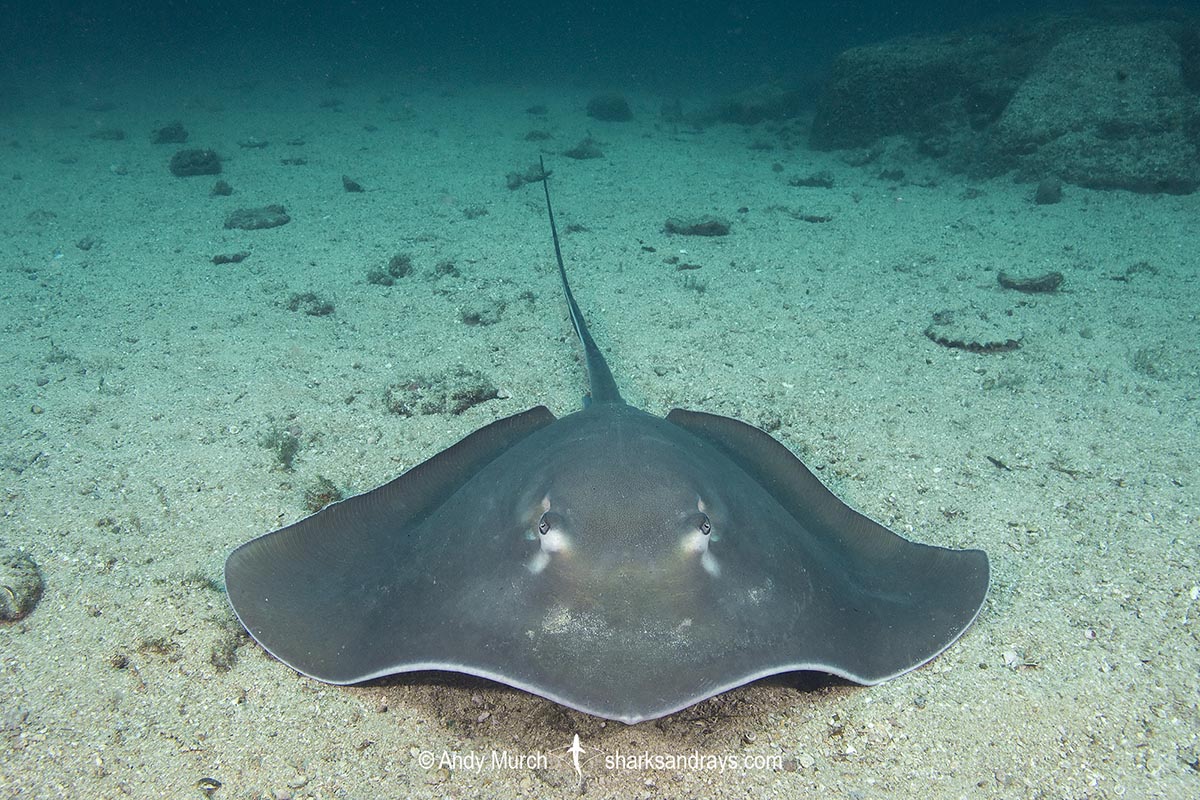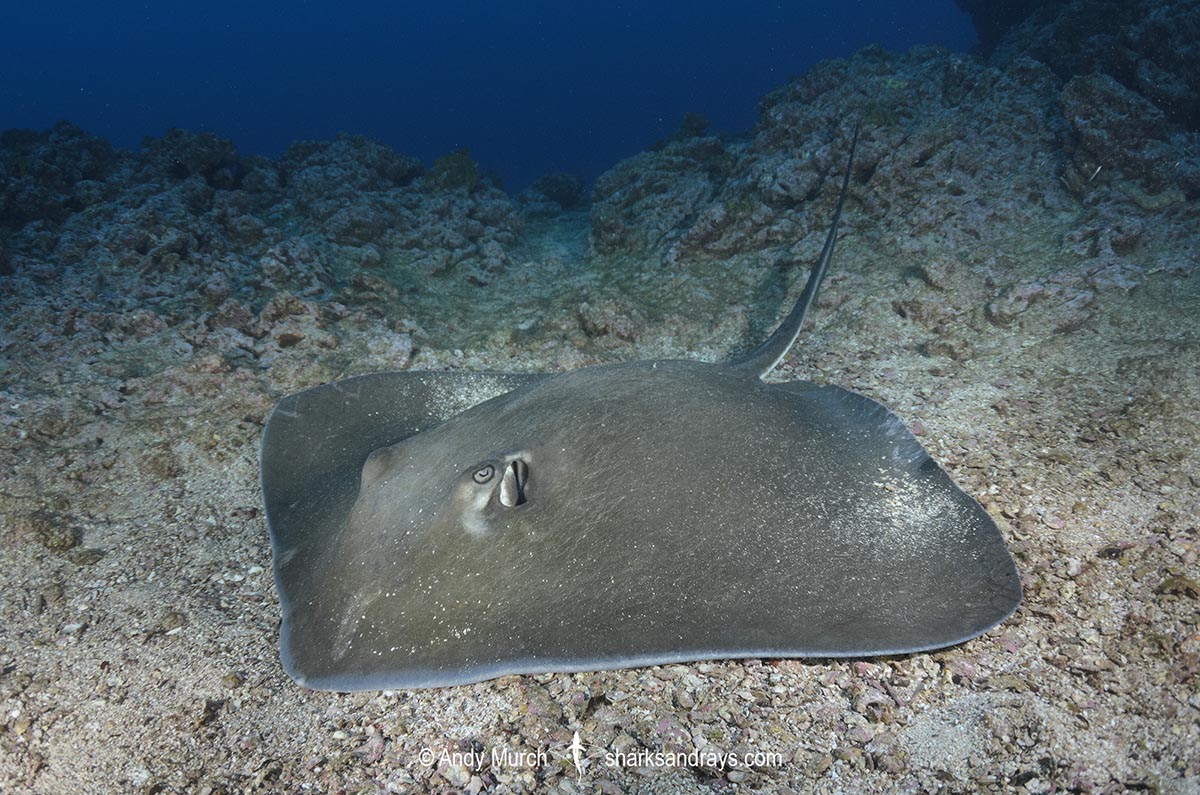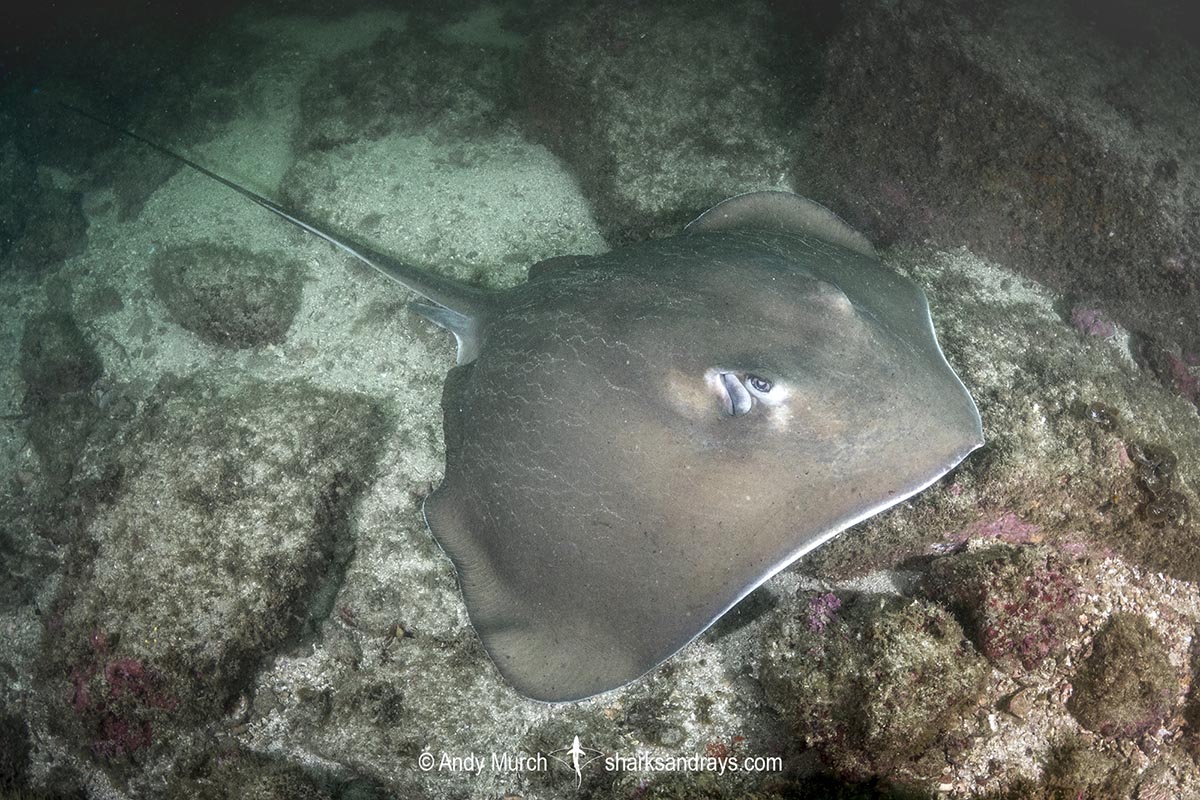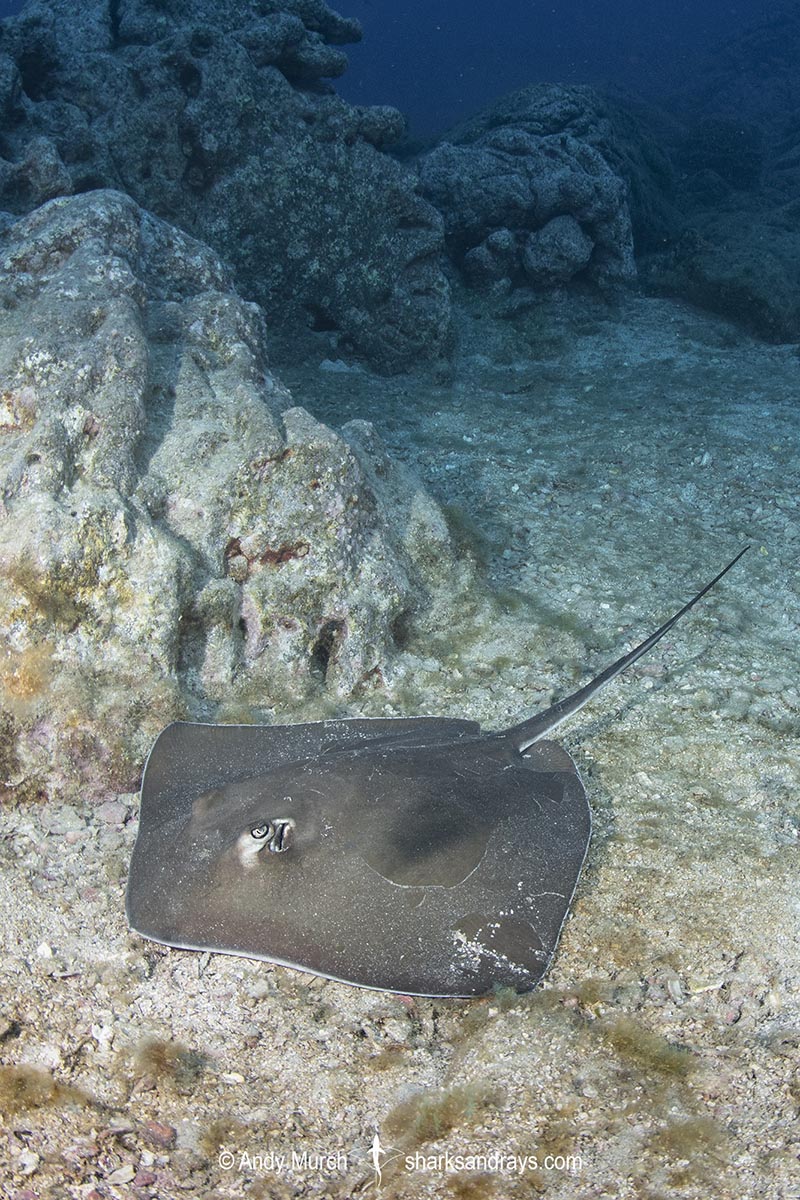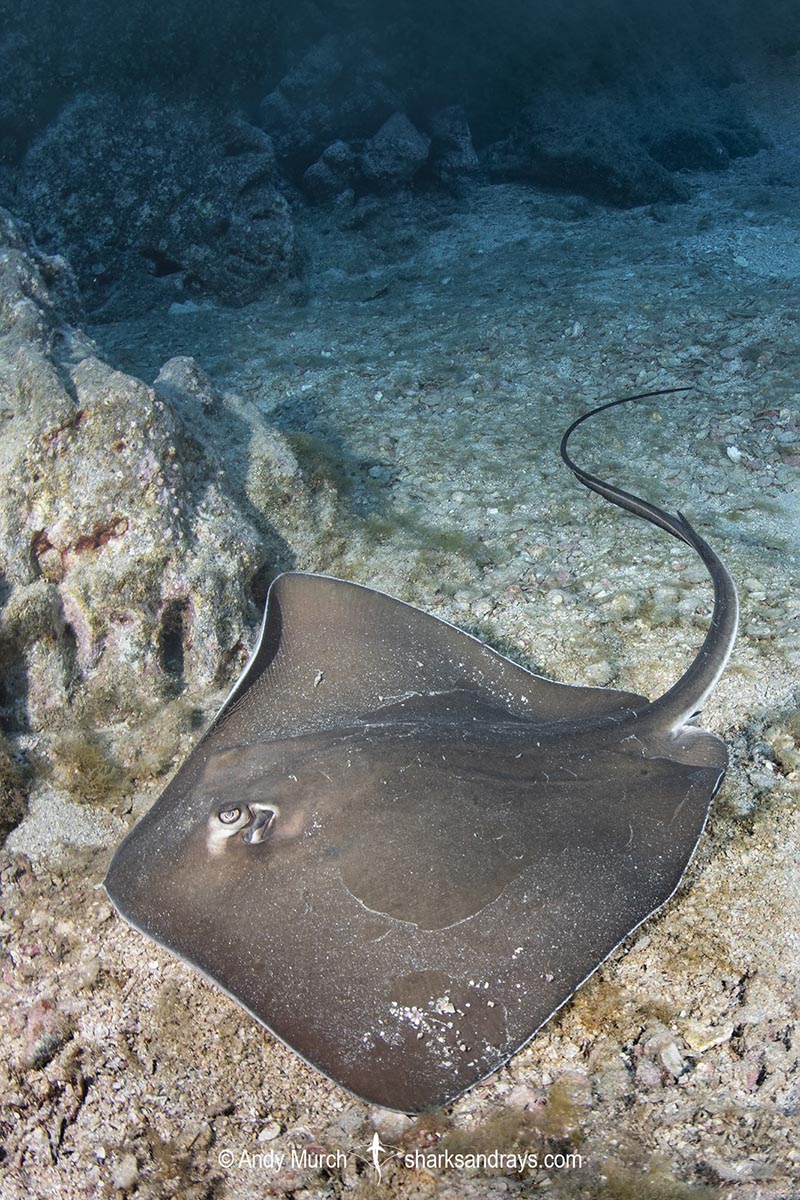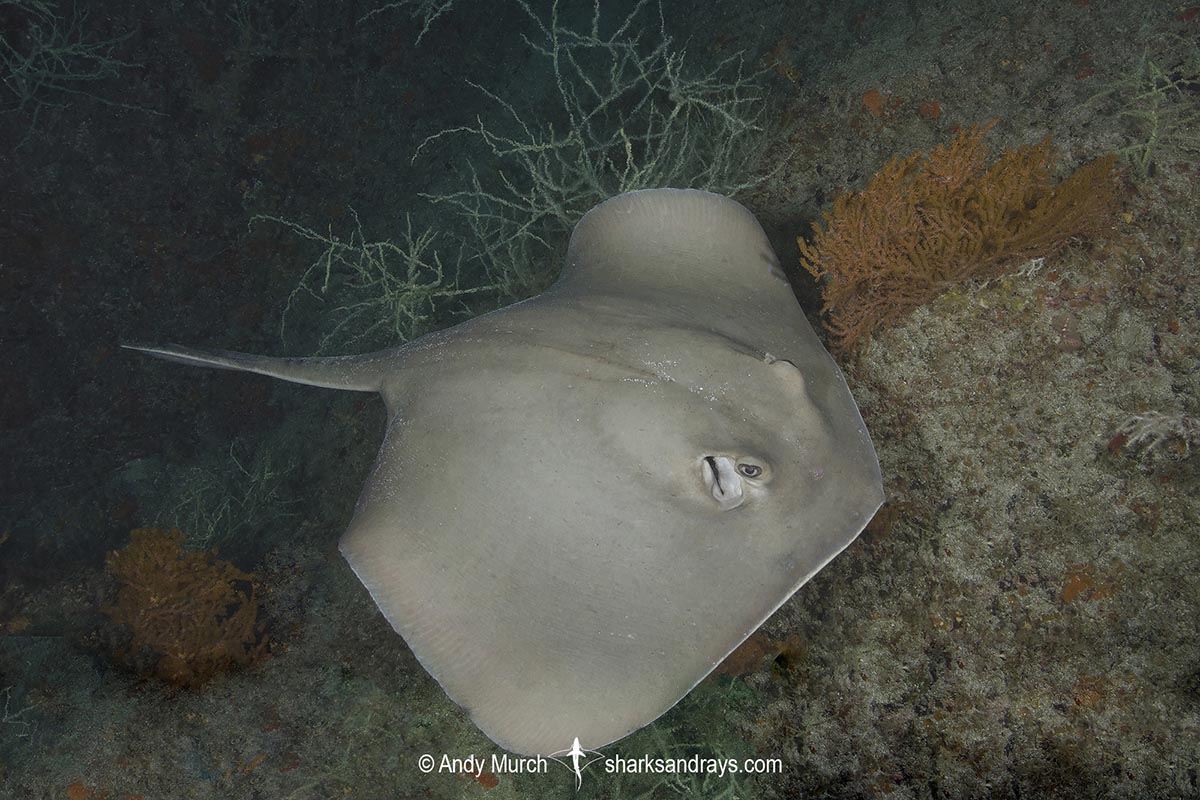Common names
Longtail Stingray.
Binomial
Hypanus longus.
Synonyms
longa, Dasyatis longus, Trygon longa.
Identification
A large stingray with a kite-shaped disc that is wider than long; disc width approximately 1.2 x length. Snout fairly long and obtusely angular with a slightly protruding tip. Anterior margins of disc straight or weakly concave. Pectoral fin apexes tightly rounded or angular. Pelvic fins quite small, with rounded apices.
Eyes large. Snout length 1.4-1.8 x combined eye and spiracle length.
Mouth with 5 oral papillae. Deep labial furrows around mouth. Mouth weakly arched. Nasal curtain skirt shaped with a strongly fringed margin. Nostrils thin, positioned slightly obliquely.
Juveniles devoid of denticles. Adolescents have a very narrow denticle band from nape to mid disc; adults likely similar. Large adults have very small thorns on shoulders, more thorns on midline near nape, and up to 4 larger spear shaped thorns on base of tail. Tail long, tapering gently to filamentous tip. Tail length (when intact) approximately 2-2.2 x disc width. Dorsal finfold reduced to a ridge. Ventral finfold long; height slightly less than adjacent tail thickness. One tail sting usually present.
Colour
Dorsum grey, reddish-brown, or olive grey, with pale areas below eyes and behind spiracles. Ventrum white, with a wide dusky or brownish disc margin. Sides of tail white. Tail beyond caudal sting dusky or black. Ventral fin fold dark.
Size
Maximum disc width 158cm. Disc width at birth 40cm.

Conservation Status
VULNERABLE
The longtail stingray is captured in unmanaged gillnet, purse seine, longline and shrimp trawl fisheries. Barely any population trend estimates are available, but there is evidence of short term declines in Colombia.
The longtail stingray has limited biological productivity and is unable to withstand the current high level of fishing pressure. The overall population is thought to have declined by 30–49% in the last 84 years.

Habitat
Sub-tropical/tropical seas. On sandy substrates, often adjacent to rocky reefs. Inshore, continental shelf, and around offshore islands and seamounts. From shallow water to at least 118m.
Distribution
Tropical eastern Pacific. Found from Magdalena Bay in southern Baja to Ecuador, including Revillagigedo and Galapagos Archipelagos.
Reproduction
Matrotrophic aplacental viviparity. 1-5 pups per litter. Gestation approximately 10-11 months.
Diet
Diet consists mainly of mantis shrimps and small fishes.
Behavior
Sedentary; spends much of the day resting on the substrate.
Reaction to divers
A fairly approachable species if accustomed to divers e.g. at Socorro.
Diving logistics
Longtail stingrays are quite common in the Sea of Cortez. Cabo Pulmo on Baja’s Eastern Cape has one of the best reef systems in the area and is a good area for this species.
I have also encountered numerous longtail stingrays at the Revillagigedo Archipelago aka Socorro. The stingrays at Socorro are used to divers approaching them and are quite tolerant of camera flashes.

